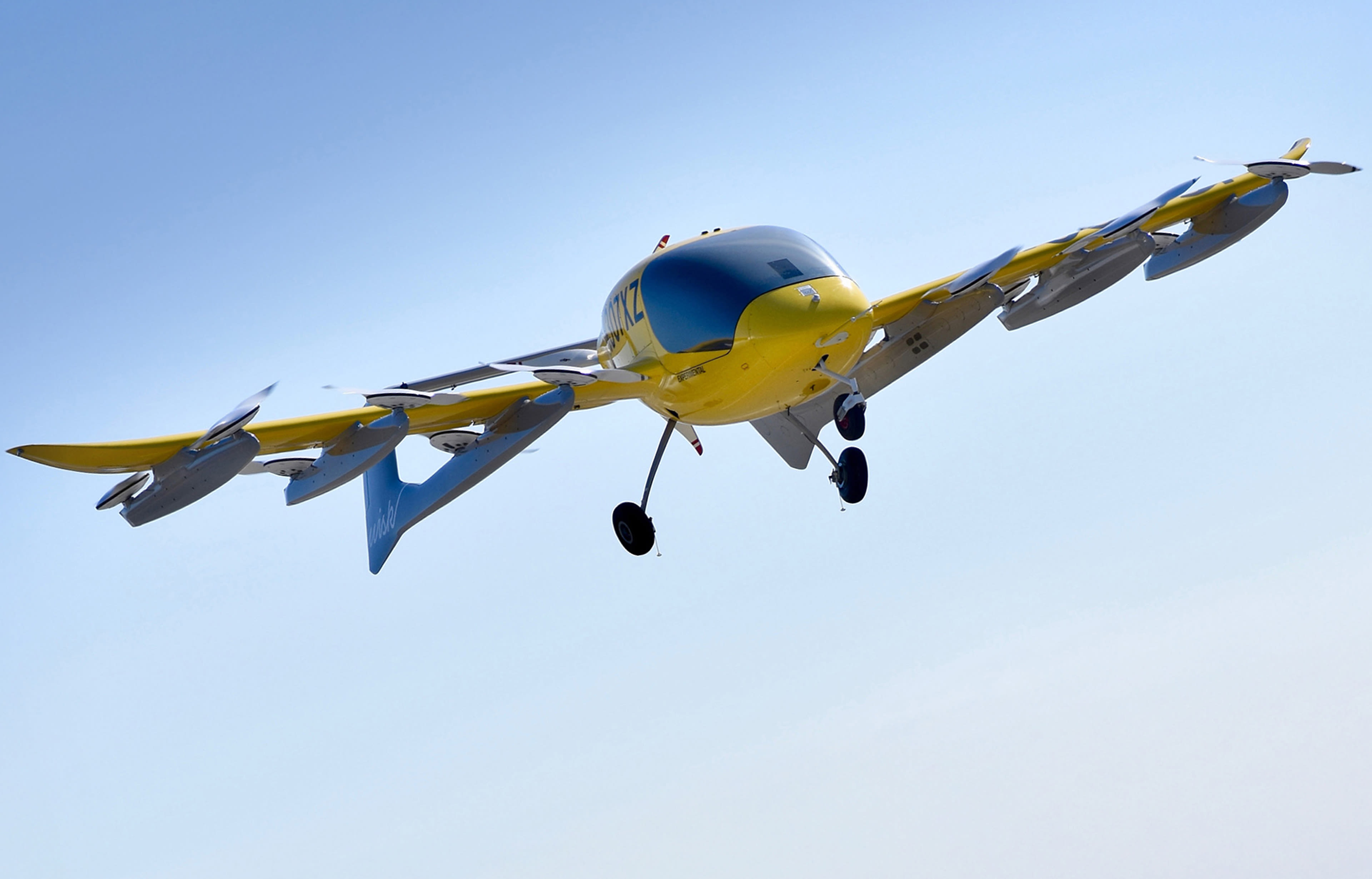Hautū Aunoa Autopilot – tech takes off at MOTAT!

Hautū Aunoa Autopilot – tech takes off at MOTAT!
Media Release: June 2025
The Museum of Transport and Technology (MOTAT) is exploring cutting-edge technology at the forefront of both aviation and environmental protection in its latest exhibition Hautū Aunoa Autopilot.
The new exhibition is a chance for visitors to learn about autonomous technology, discovering pilotless aircraft preparing to swoop into the air taxi sector and machines made to monitor waterway health and protect native species across Aotearoa.
The star of the show is the Wisk Cora – a Generation 5, autonomous, electric (battery-operated) aircraft for two passengers that can take off and land vertically without the need for crew – no pilot or runway needed!
This bright-yellow aircraft was tested right here in Aotearoa in Canterbury’s Mackenzie District from 2017-2021, where the California-based developers Wisk Aero flew it up to three times a day. New software and improved sensors were also tested at this time.
Ultimately, the prototype air taxi is designed to beat road congestion, and in the future will take city passengers on safe, low-altitude, short-hop journeys with a top speed of 160kph and a flight range of around 40km.
MOTAT acquired the Gen 5 Wisk last year and Senior Curator, Technology, Nicola Jennings, says it was wonderful to be offered the Wisk and to be able to display it so quickly. “We find that really exciting as it shows that people in the industry see MOTAT representing what’s happening now and collecting contemporary and innovative technology, not just the transport and technology heritage we are more widely known for.”
Jennings says the aircraft is a good example of Aotearoa New Zealand’s reputation as a fertile environment for research and development. “There has been a real openness and encouragement from government, good safety standards and a relatively clear legal framework that has encouraged experimentation and growth in the industry.”
The technology is at the vanguard of aviation frontiers and, while internationally many companies are carrying out research and development in Advanced Air Mobility (AAM), Wisk Aero is one of a handful to have achieved autonomous (though monitored by humans on the ground) flight. AAM aims for low-altitude transport of goods and people, relieving the load on the roads.
Wisk Aero is now testing the Gen 6 aircraft (able to seat four) in Australia and the air taxis are planned to be ready to transport passengers in time for the 2032 Brisbane Olympic and Paralympic Games.
MOTAT visitors can experience flying in this emergent technology for themselves via a virtual reality (VR) experience, especially developed for the exhibition. Wearing a VR headset, they will “take off” vertically through the exhibition roof and soar over Te Wai Ōrea Western Springs, flying over the local area, before landing at Te Tōangaroa Mechanics Bay.
“We created this playful VR experience so visitors can engage with the Wisk,” says Exhibitions Content Developer Hannah Crichton. “It was a chance to work again with Waxeye who we partnered with in our award-winning Aviation Hall digital experience Te Kōtiu.”
All the other autonomous technology on display in Hautū Aunoa Autopilot is developed in Aotearoa New Zealand and showcases how this technology can be used to improve systems and processes around conservation, agriculture and water quality management.
Still in the aviation arena are two Aotearoa New Zealand-developed drones from Aeronavics and Envico Technologies. Acting as eyes in the sky, Aeronavics provides a tailored service for mapping and planning, while Envico Technologies uses drones mounted with thermal cameras to monitor land and identify areas for pest eradication.
Back on terra firma, a predator-free Aotearoa is the focus for NZ AutoTraps, and visitors will see one of its solar-powered, auto-resetting traps that can distinguish between unwanted pests and native species.
The exhibition also covers water conservation with AquaWatch’s waka, a water monitoring device with onboard sensors. The device feeds real-time readings on oxygen and pH levels, water clarity and temperature back to a human user via satellite or cellular networks, making water management timelier and more efficient.
Even under-five-year-olds can get hands-on with an interactive map of Te Wai Ōrea made just for them.
Crichton says, “we’re here to safeguard and protect these objects for future generations, but we want visitors to explore and engage with the technology. Hautū Aunoa Autopilot is hands-on, minds-on and the goal is to spark curiosity.”
Image credit: Wisk Generation 5 Cora, Wisk Aero LLC.
Hautū Aunoa Autopilot opens on 28 June 2025 at MOTAT’s Great North Road location. The 10th Ngā Korero Rererangi Aviation Conversation will be held on 10 July at the Aviation Hall at MOTAT where Cameron Baker, the CEO of Tauranga-based Envico, will talk about how technology is helping the company’s conservation work. Envico was named Kamupene Māori o te Tau - Māori Company of the Year at the 2024 Hi-Tech Awards and has loaned a drone for display in Autopilot.
ENDS
For further information, images or interviews, please contact Communications Manager, Nicole.parish@motat.org.nz, Ph 021 273 3563




